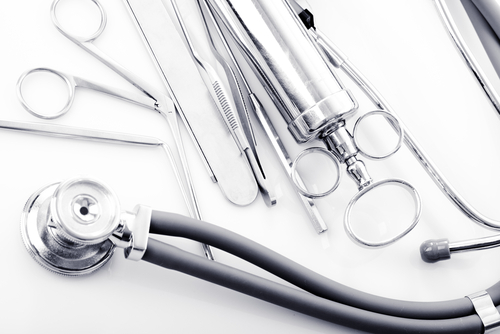What is the new Medical Devices Rules, 2017?
M3 India Newsdesk Nov 15, 2017
Medical devices and equipment have been a lot in the news in the recent times.

With scandalous accusations on hospitals misusing and reusing medical devices, to the government threatening to repeatedly intervene on controlling the prices of these devices, the medical devices industry has been fraught with a lot of action in recent times.
India has nearly 800 medical device manufacturers; however, a lot of medical devices are still imported which is nearly 70% of total sales. India does not have a well-developed manufacturing base of medical devices. The Government has, over the past few years, taken measures to promote research, development and manufacturing of medical devices in India; some of which are permitting 100% FDI in the medical devices sector and correction of the inverted duty structure for certain medical devices.
The government proposes to regulate medical devices by the Medical Devices Rules, 2017, promulgated on 31 January 2017 which are likely to come into force on 1 January 2018.
This is the first legislation in India dealing specifically with medical devices. Until now, few categories of medical devices notified under the Drugs Act were regulated as drugs under the Drugs and Cosmetics Rules, 1945. The biggest problem with the earlier rules was that they were similar for both drugs and medical devices.
Below, we provide some of the salient features of the new Medical Devices Rules which will now govern the medical device industry in India:
A risk based classification of products will be followed
The devices are classified into four categories, with classifications ranging from Class A to Class D devices, with A being those of lowest risk while those in Class D belonging to devices of high risk. Each class will have a different set of regulations. Higher the risk, higher will be the rules and regulations for approval.
Class A -Low risk (gloves, enema devices, bandages, cotton wool etc.)
Class B - Low moderate risk (syringes and sets for infusion pumps, anaesthesia breathing circuits etc.)
Class C -Moderate high risk (haemodialysis equipment, urethral stents, contact lenses, removable dental prosthesis etc.)
Class D -High risk (spinal needles, angioplasty balloon catheters, dedicated disposable cardiovascular surgical instruments etc.)
Clinical trials-not anymore
According to the earlier rules, medical devices were subject to clinical trials and the rules were much more complicated, sometimes requiring four phases of clinical trials similar to drugs. Now, there will be no requirements for conducting an academic study if the study is approved by the ethics committee. Trials and post-marketing surveillance will be necessary for new medical devices not yet approved for sale or for import, for medical devices which claim to have a new use, new material, major change in design or are addressing a new target population. Further, an import license would be provided to devices without clinical investigation for devices issued a free sale certificate in the U.S, the U.K, Australia, Canada, Japan or members of the EU.
Online license applications
Licenses are necessary for importing, producing or marketing devices. Earlier, licenses would be issued to the manufacturers and importers were given licenses permanently until they decided to give them up or were cancelled due to violations. The renewal fee however, had to be paid every five years.
The Devices Rules state that medical devices will be under the ambit of both the Union and State Governments. Manufacture licenses for Class A and Class B devices will be given by the State while for the Class C and Class D devices and for import, the license will be given by the Union government.
All applications will have to be made through a single online portal.
Unlike the Drugs Rules, two or more importers cannot obtain a license for the same manufacturing site unless an application for import is made through the same authorized agent.
Notified third parties will assess and verify the medical device manufacturing units.
Overall, the Rules have been received as a mixed-bag. There is now much more clarity on the issue of regulating medical devices and it was high time that they were separated from drugs, but the new rules need to seek a balance of adequately regulating the products while not strangulating the sector with unbearable regulations.
-
Exclusive Write-ups & Webinars by KOLs
-
Daily Quiz by specialty
-
Paid Market Research Surveys
-
Case discussions, News & Journals' summaries